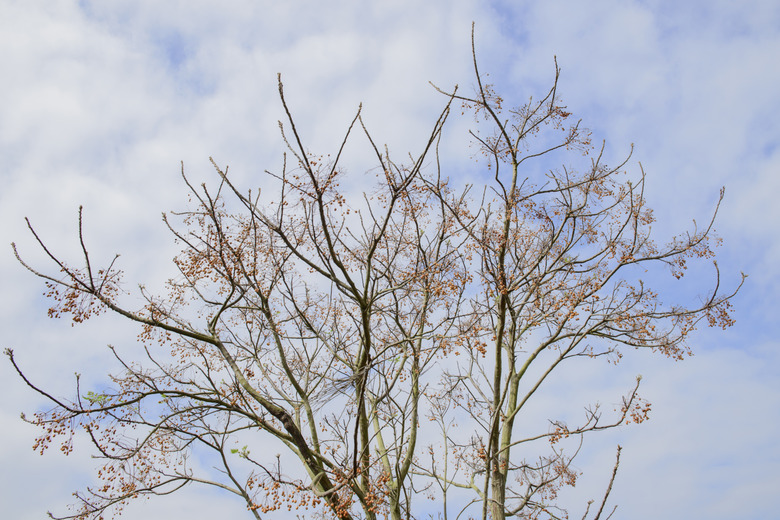What Is Mindi Wood?
Mindi wood, known scientifically as Melia azedarach, and more commonly as white cedar or Chinaberry, originated in Asia and India. Originally planted in North America as a shade tree, mindi is now harvested from farmed, locally grown trees and is mostly restricted to small-scale projects and hobbyist applications.
Wood Properties
Mindi has a density similar to Red Oak. On the Janka scale, a scale that rates wood hardness and mass mindi ranks at 1,055, while red oak ranks at 1,060. The difference in hardness between the two is almost imperceptible. Mindi is naturally resistant to decay and fungus as is cedar. Fresh-cut or mindi sap wood appears close to poplar, as it's yellowish with brown streaks. With exposure to light and closer to the heart wood, mindi grows darker in as in the colors found in teak or cherry. Its texture is coarse like oak, but it has tighter grain patterns than oak does.
Finish Coats
The coarse grain of mindi sands smooth; it accepts stains and finishes readily. Dimensionally stable just like cedar, mind is not likely to warp or twist. Mindi responds to woodworking equipment with ease when cutting, milling, sanding and gluing. Working with mindi wood typically requires predrilled pilot holes for screws; do not drill holes within 3/4-inch of any edge or end. The grain, although straight, has large open pores that typical need filled with products that contain high-levels of particulates to ensure a smooth, glossy finish. If a rustic appearance is desired, mindi can be finished without primer to bring out the textured or rustic appearance.
Environmental Conditions
The mindi tree is highly adaptable to most environmental conditions, is resistant to disease and insects and thrives in open areas. The invasive properties of mindi has not landed it on the invasive species list, but mindi is is known to form dense thickets in forests and marshes, displacing native vegetation. The prolific reproduction of the species requires that growth stewardship is needed to prevent the trees from taking over native species. Some tests have indicated that the leaves and bark from the mindi tree can also provide health benefits.
Workability and Uses
Woodworkers favor mindi or white cedar for its workability. Primarily used by carvers for specialty items, novelties and small-scale turnings, some commercial dealers have imported larger amounts of mindi to use for flooring. Mindi, due to it's straight-grain, nearly knot-free texture, is also used for interior door and window trim, and to a lesser degree, moldings, cabinets and furniture, such as chests and boxes. The close-grain texture also lends itself to the manufacture of mindi veneers for specialty uses. Mindi dust may irritate eyes and skin. Wear breathing and eye protection when working with the wood.
